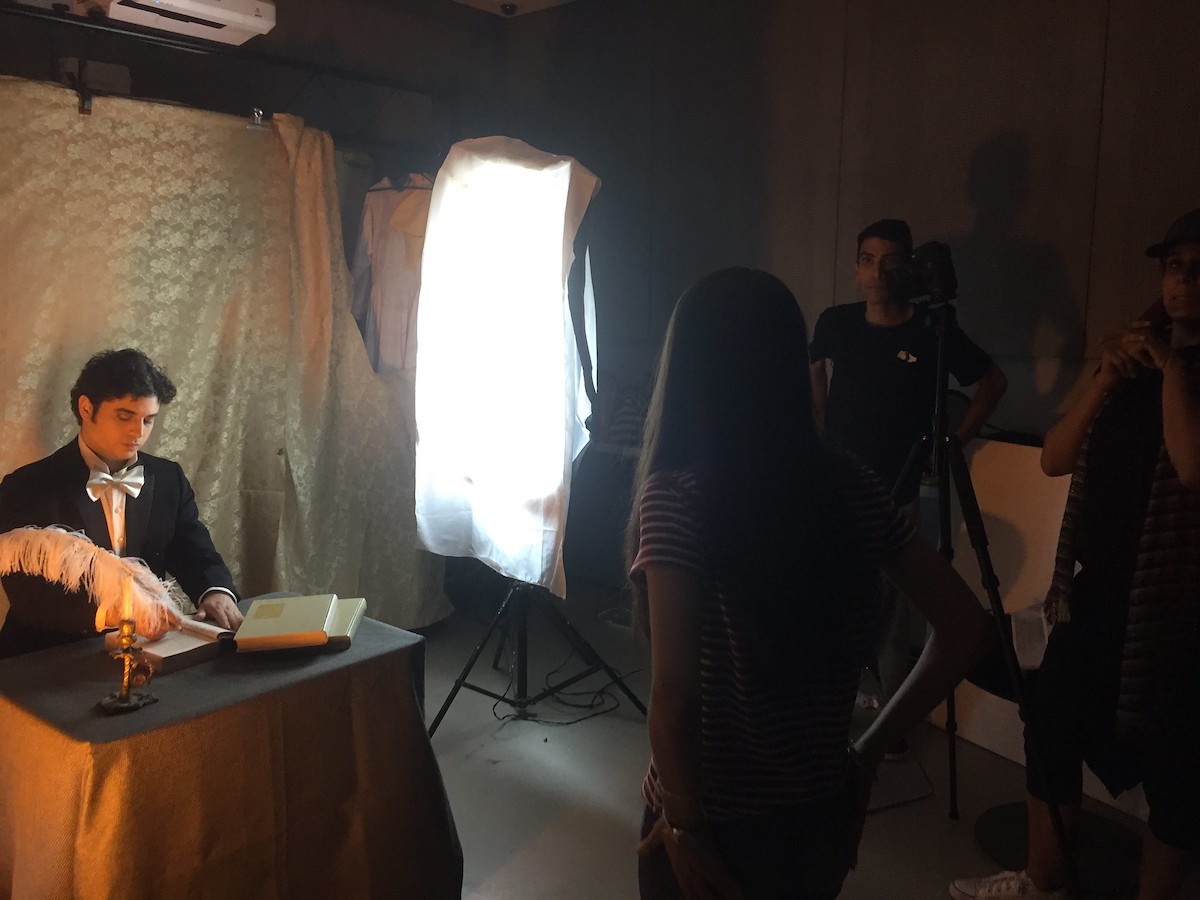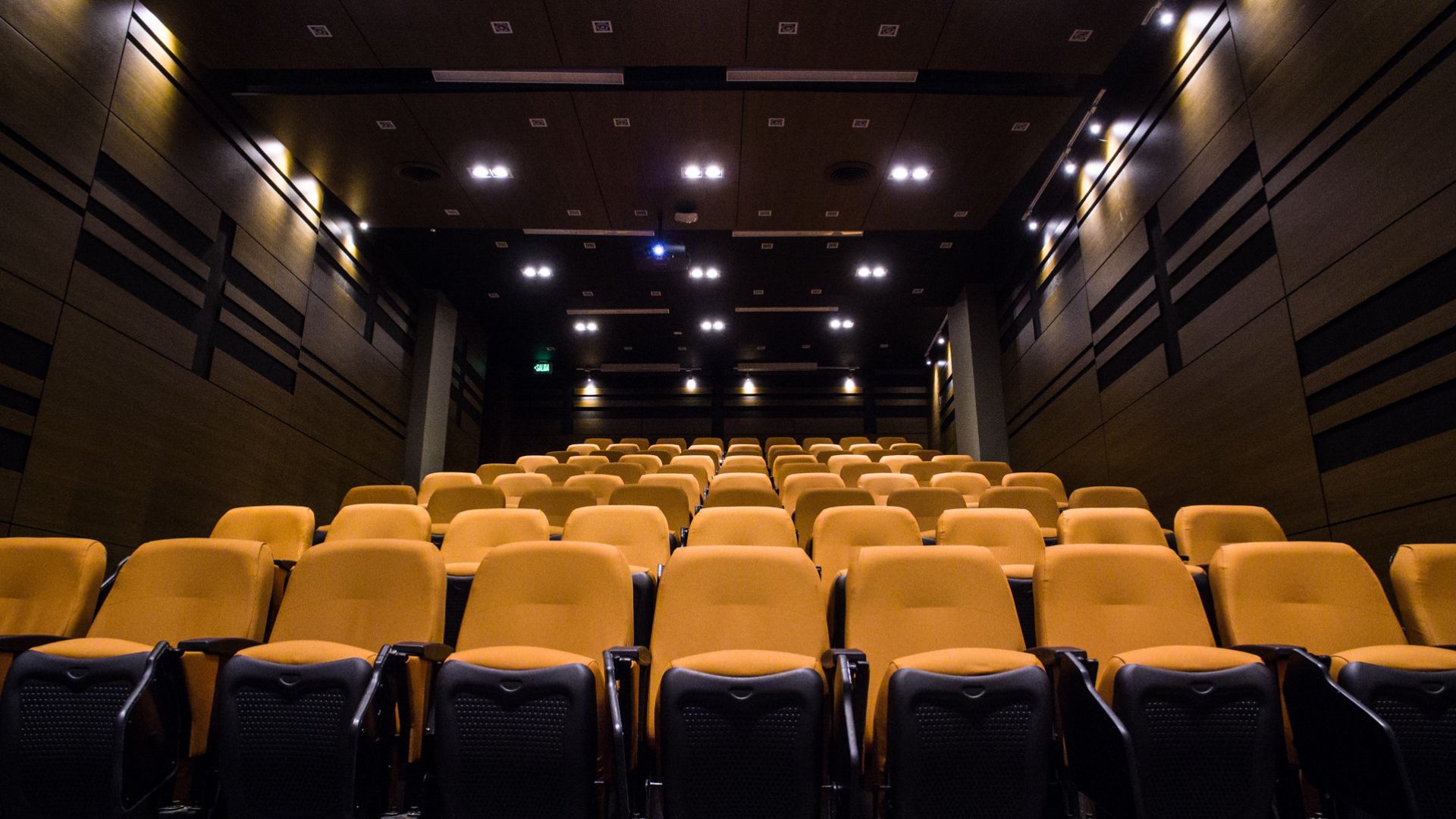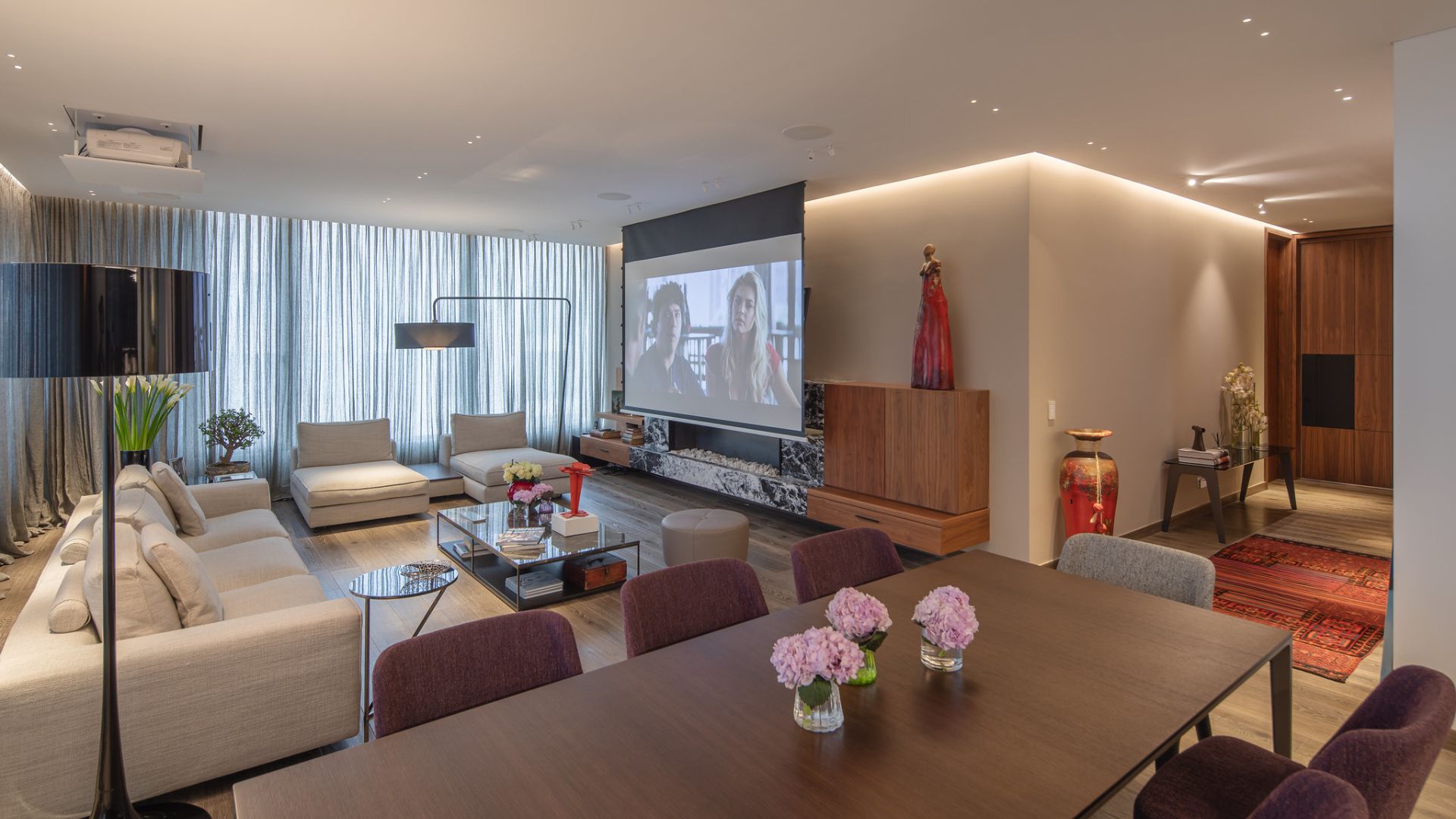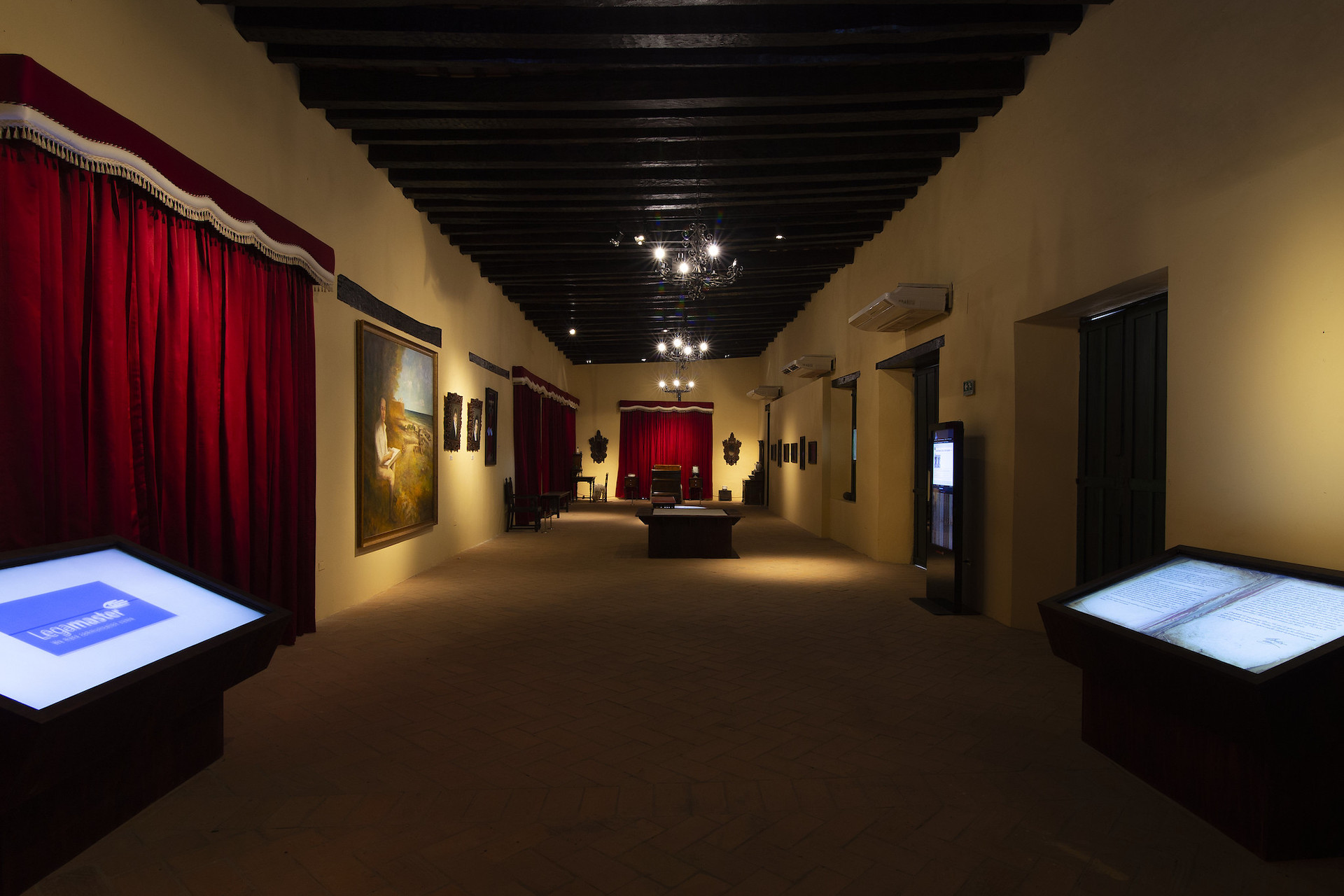A Journey Through Time
In the streets of the municipality of Soledad, Atlántico, stands a colonial house that safeguards the echoes of the past. Here, the Liberator Simón Bolívar, in the last days of his life, sought refuge and relief from his ailments. This dwelling, which has witnessed crucial moments in the history of Colombia, was proclaimed a National Monument and, on December 6, 2019, it opened its doors as the Bolivarian Museum.
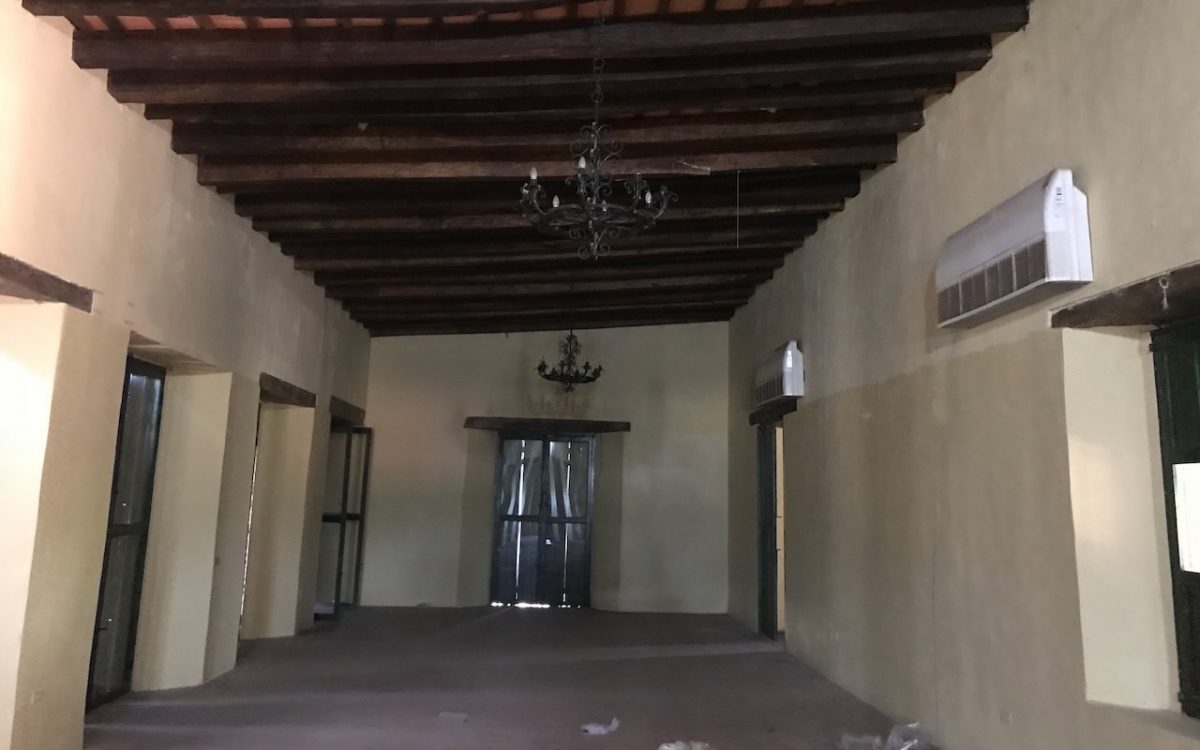

Before and After the Interactive Room of the Simón Bolívar House Museum in Soledad.
El Museo Bolivariano no es simplemente un espacio de exposición. Es un entramado de seis áreas, cuatro de las cuales han sido realzadas con intervenciones tecnológicas. Sin embargo, el desafío radicaba en que la tecnología no debía opacar, sino potenciar la narrativa histórica. En este contexto, la tecnología se convierte en un puente sutil, permitiendo a los visitantes sumergirse en la historia sin distracciones.
Las áreas a intervenir fueron las siguientes:
- El salón que recrea las condiciones en que habitó Simón Bolívar.
- La sala de muestra interactiva y orgánica de Simón Bolívar.
- Una galería y sala de exposiciones
- Un auditorio de 100m2.
- Un patio abierto que cumple las funciones de anfiteatro.
- Una biblioteca y centro de lectura.
Fase 1. Conceptualización y Diseño Tecnológico a Partir del Guión Museográfico
Impulsado por la Gobernación del Atlántico en Colombia, emergió la visión de revitalizar la histórica residencia de Pedro Visbal, el emblemático refugio temporal del Libertador Simón Bolívar. Para materializar esta visión, se conformó un equipo multidisciplinario. Especialistas en Antropología nos convocaron, buscando explorar cómo la tecnología podría potenciar la experiencia de los visitantes en este enclave tan tradicional.

Fachada del Museo Bolivariano de Soledad – Casa Visbal. Fotografía: Situr Atlántico
Central en este proceso fue el guión museográfico, una “hoja de ruta” esencial en la creación y diseño de museos. Este documento no solo delinea la narrativa y estructura de la exposición, sino que también detalla la historia que se desea contar y cómo los objetos se disponen e interactúan para ofrecer una experiencia educativa y coherente al público. Con este guión como cimiento, se buscó fusionar pasado y presente, tradición y tecnología, en un espacio que resuena con la historia de una nación.
Basándonos en esta narrativa, nuestro equipo creativo ideó estrategias para comunicar eficazmente la información al visitante. Un enfoque clave durante este proceso es visualizar a nuestros visitantes como niños curiosos. Nos preguntamos: ¿Cómo capturamos su atención? Y, más importante aún, ¿cómo aseguramos que la fascinante historia de esta casa quede imborrable en sus memorias?

Render de la fase de conceptualización
Con el apoyo de renders, referencias y demostraciones trabajamos una a una cada estación que recorrían los visitantes. Es así como al final acordamos desarrollar los siguientes elementos:
Dynamic Visbal Painting and Welcome
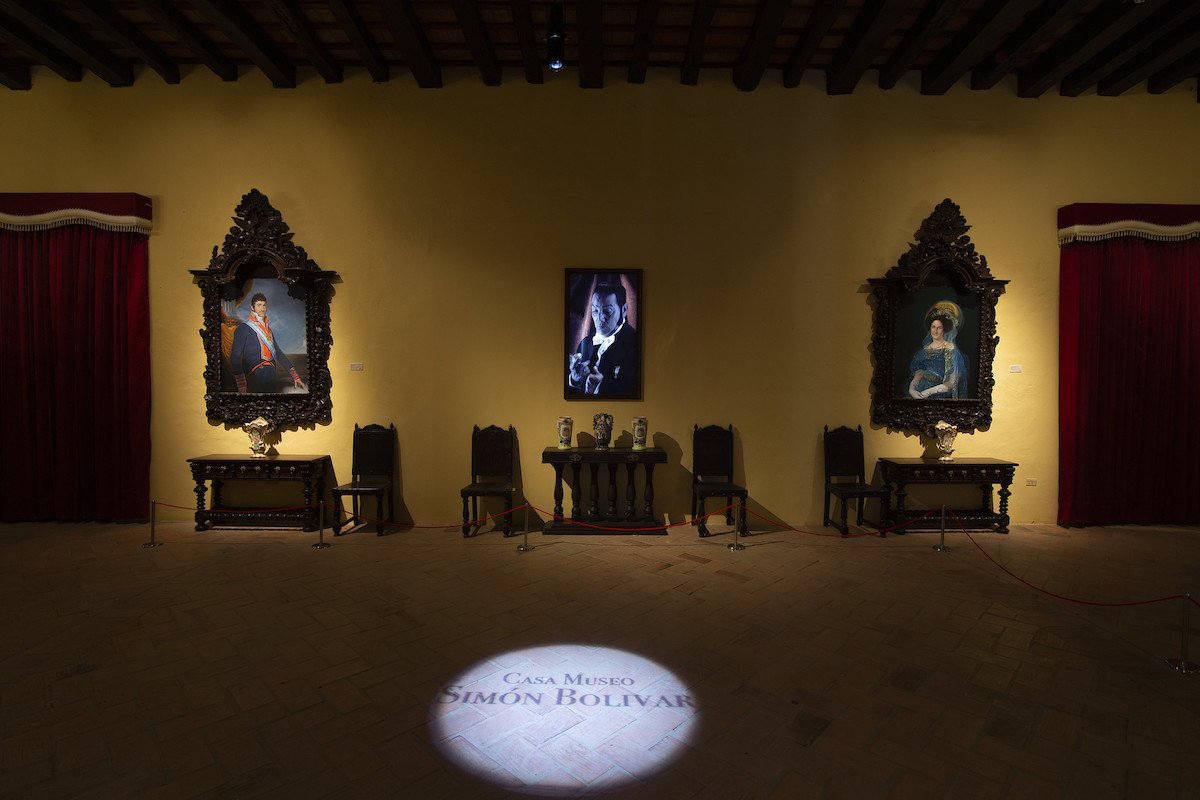
From the moment visitors cross the threshold of the museum, a surprise awaits them. In the middle of the room, a painting of Pedro Visbal, seemingly ordinary, becomes the focal point. Although at first glance it appears to be a static representation of the past, this artwork hides a magic that defies expectations.
Drawing inspiration from the animated paintings that come to life in the magical world of Harry Potter, the Visbal painting is not simply an image; it is a dynamic window to the past. Before the astonished eyes of the visitors, Visbal’s figure animates, speaking directly to them with a warmth and familiarity that transcends time.
With a resonant voice full of emotion, Visbal shares tales of the past, narrating the evolution of the house, the intricate details of its furnishings, and its role in the tapestry of Colombian history. Each word, each gesture, immerses the visitors in a bygone era, allowing them to feel the essence and spirit of the time.
This innovative fusion of traditional art and advanced technology not only captures attention but also ignites curiosity and wonder. It acts as a prelude, preparing the visitors for a deeper and more enriching journey through the corridors of time and history that the museum houses.
Interactive Portrait of Simón Bolívar

In a quiet room of the museum, an seemingly ordinary painting of Simón Bolívar becomes the epicenter of a revolutionary experience. At first glance, the portrait of the Liberator appears to be a simple relic of the past, but with innovative technology, the painting comes to life, transforming into a window to the past.
As Bolívar emerges from the stillness of the canvas, he begins to narrate episodes of his life, his struggles, dreams, and hopes. Visitors are captivated as they listen to his tales, feeling as if the Liberator himself is sharing a private moment with them. Every word, every gesture, transports the viewers to a time of revolutions and change.
The secret behind this technological marvel is a matte screen monitor, carefully framed in a style that evokes the colonial era. This combination of art and technology creates an illusion so convincing that many visitors are tempted to approach and touch the painting, expecting to feel the texture of a real painting.
This experience, which fuses past and present, is a testament to the power of art and technology to connect people to history in a deep and emotional way. It’s an invitation to reflect on Bolívar’s legacy and to appreciate the magic that occurs when history comes to life before our eyes.
Map of the Liberator’s Journey Through the Caribbean

The interactive map is not simply a graphic representation; it’s a window to the past that meticulously traces the extensive journey of Simón Bolívar through the Caribbean region. Each stop, from the most prominent cities to the most remote villages, is marked, culminating in his final destination: Santa Marta.
As visitors approach the map, they are invited on a journey through time. From each point, vibrant tales emerge that reveal personal anecdotes of the Liberator, crucial confrontations that defined the course of independence, and intimate moments that offer a more human view of Bolívar. Each location is a story in itself, and the map becomes a silent narrator sharing these episodes with those willing to listen.
The robustness of vandal-resistant monitors ensures that this experience is not only educational but also enduring. These devices, designed to withstand the test of time and the enthusiasm of the most curious visitors, ensure that each generation, from avid historians to children on their first museum visit, can immerse themselves in this historical journey and connect with Bolívar’s legacy.
Collection of Dynamic Portraits
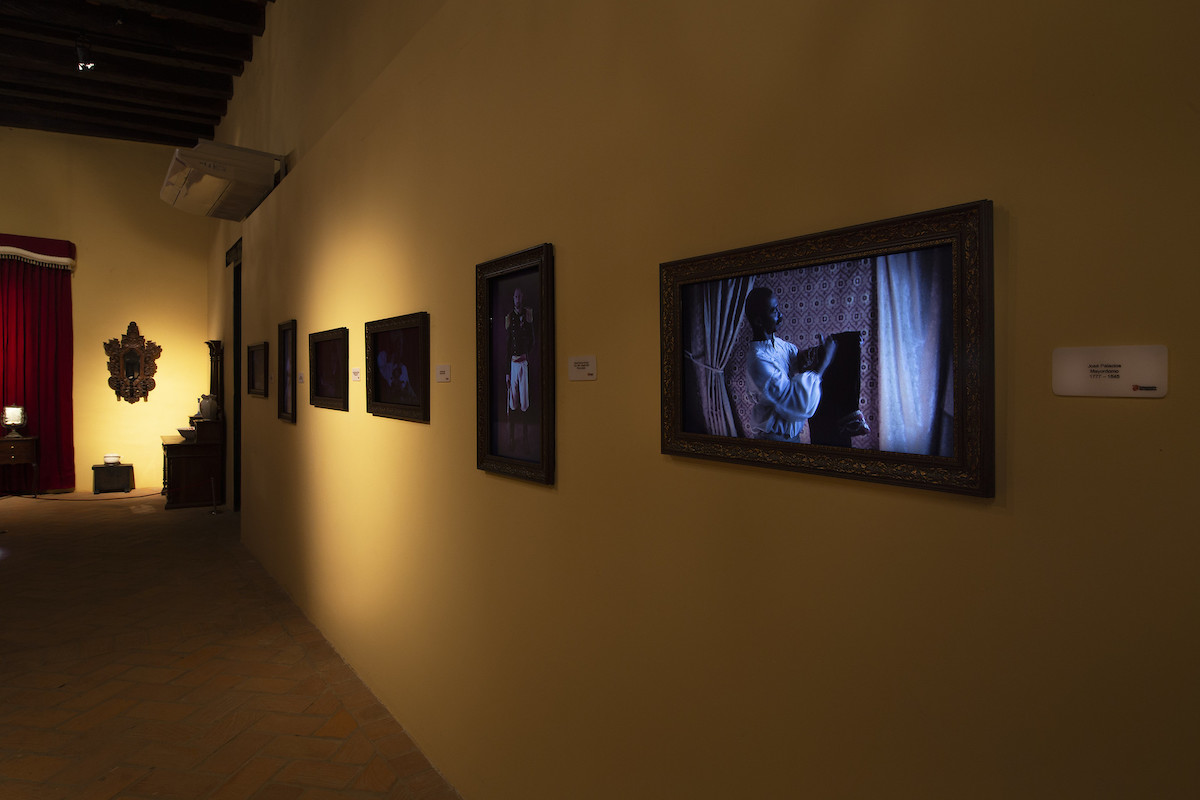
As visitors navigate the museum, one section in particular invites a reflective pause. A wall, meticulously decorated in period style, serves as the canvas for six paintings that, at first impression, evoke the mastery of classic oils. The images, rich in detail and color, seem to be immutable testimonials of the past. However, upon closer observation, visitors soon discover that not everything is as it seems.
Thanks to the cinemagraph technique, an innovative fusion of photography and video, selected elements within each painting subtly come to life. It might be the occasional blink of a portrait subject, the gentle sway of curtains in an interior scene, or the delicate movement of leaves in a landscape. These movements, almost imperceptible yet deeply evocative, infuse the images with a serene and hypnotic magic.
This interplay between traditional art and technological avant-garde creates a multisensory experience. The living paintings are not only a visual delight but also invite reflection on the intersection of past and present, tradition and innovation. In this corner of the museum, visitors find themselves enveloped in a visual dance that challenges preconceived notions of art, leaving them in awe and with a deep appreciation for the art’s ability to evolve and surprise.
Photobooth
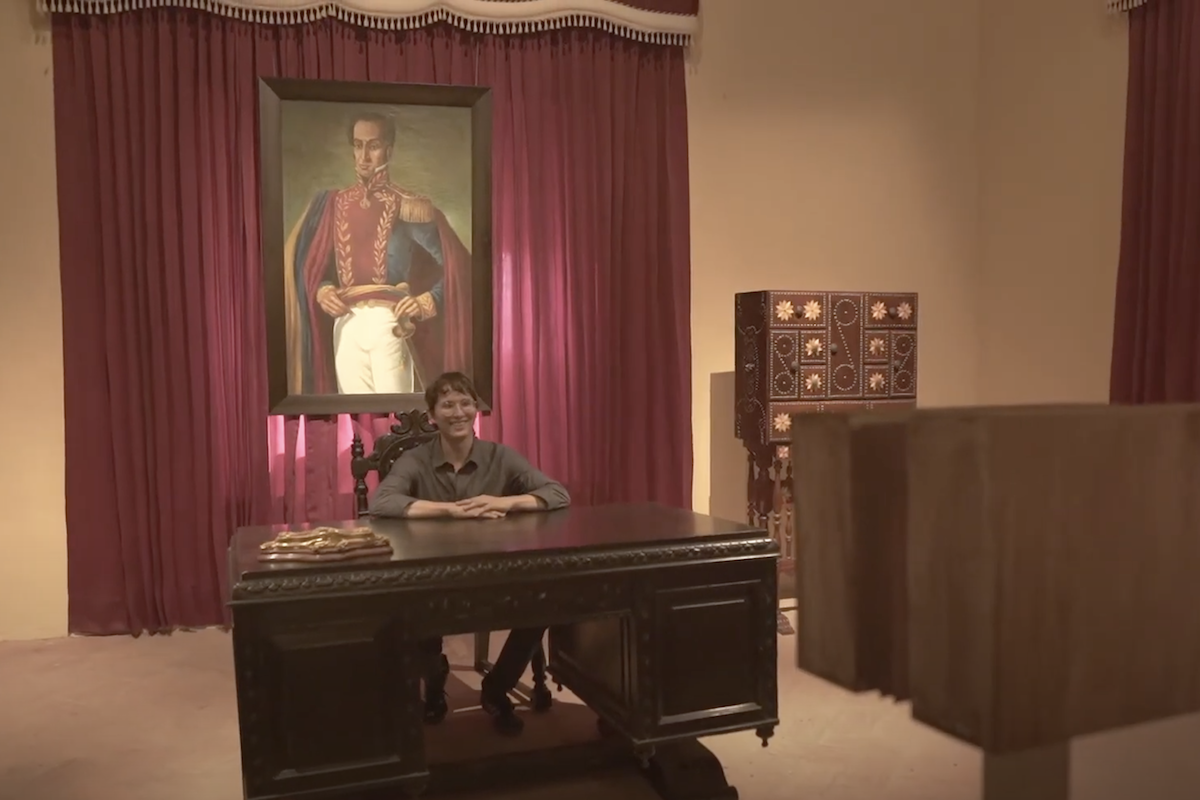
In a special corner of the museum, an acoustic curtain serves as the backdrop for an experience that blends history and modernity. Here, visitors have the opportunity to immerse themselves in the past, posing in a setting that faithfully evokes the atmosphere and aesthetics of the Bolívar era. Every detail, from the accessories to the lighting, has been carefully designed to transport participants to a historical moment, allowing them to capture and preserve that instant in a photograph.
But the experience doesn’t end with the click of the camera. With the help of integrated technology, visitors can instantly send their portraits to their email accounts or share them on social media, extending the magic of the museum beyond its walls. This feature not only allows visitors to take away a tangible memento of their visit but also provides the museum with an invaluable opportunity: the collection of data and contacts that can be used in future marketing and communication campaigns.
Virtual Books and Letters from the Liberator

In a special corner of the museum, an acoustic curtain serves as the backdrop for an experience that melds history and modernity. Here, visitors have the opportunity to immerse themselves in the past, posing in a setting that faithfully evokes the atmosphere and aesthetics of the Bolívar era. Every detail, from the accessories to the lighting, has been meticulously designed to transport participants to a historical moment, allowing them to capture and preserve that instant in a photograph.
But the experience doesn’t end with the click of the camera. With the aid of integrated technology, visitors can instantly send their portraits to their email accounts or share them on their social networks, extending the museum’s magic beyond its walls. This feature not only allows visitors to take home a tangible memento of their visit, but also offers the museum an invaluable opportunity: the collection of data and contacts that can be used in future marketing and communication campaigns.
Virtual Books and Letters from the Liberator
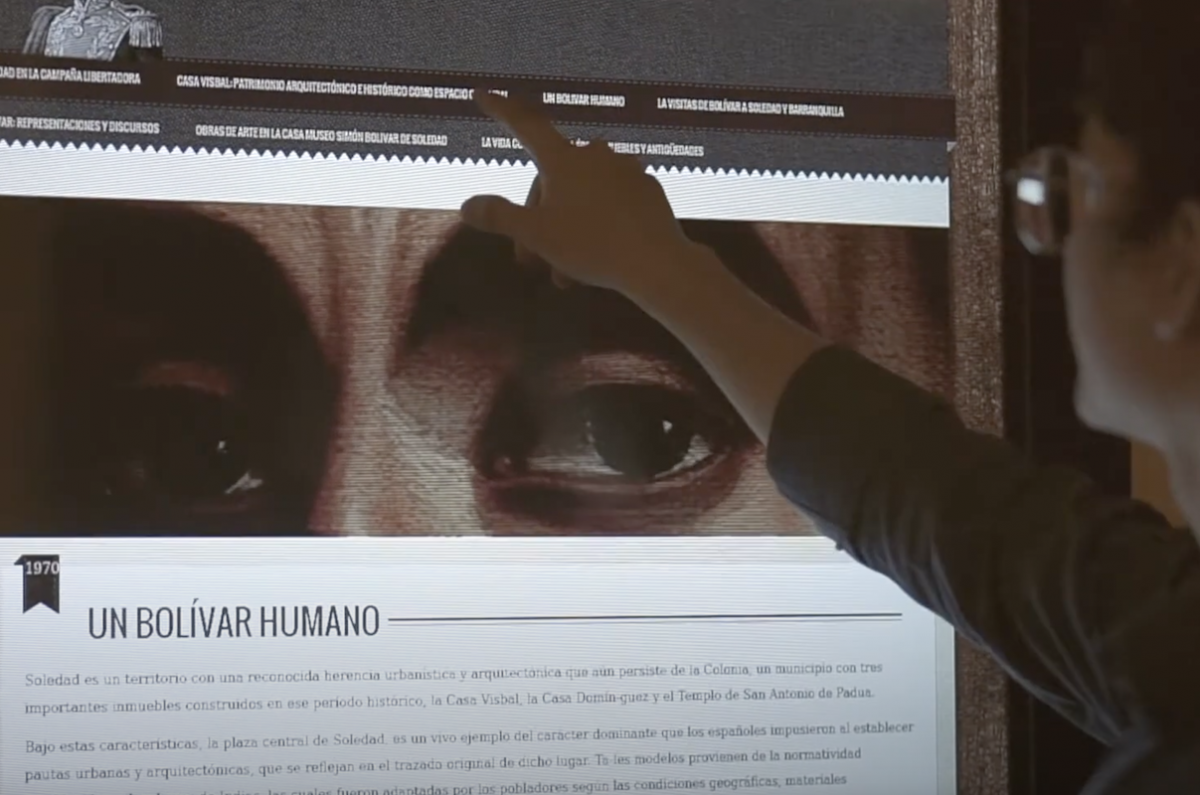
Strategically located within the museum, the kiosk serves as a station for deep knowledge. More than just an information point, this kiosk is a portal that transports visitors directly into the heart of Bolívar’s life and work. Every detail, every object on display in the museum, has a story to tell, and this is where those stories come alive.
With an intuitive and user-friendly interface, visitors can navigate through meticulously curated texts, detailed illustrations, and immersive narrations that give voice to history. Whether they wish to learn more about the sword Bolívar wielded in battle or the fervent letters he wrote, the kiosk provides a depth of information that satisfies both avid historians and casual inquirers.
The kiosk, in essence, is not just a source of information, but also a tool for connection and discovery, ensuring that each visitor leaves with a richer and deeper understanding of Bolívar’s legacy.
Exhibition Gallery
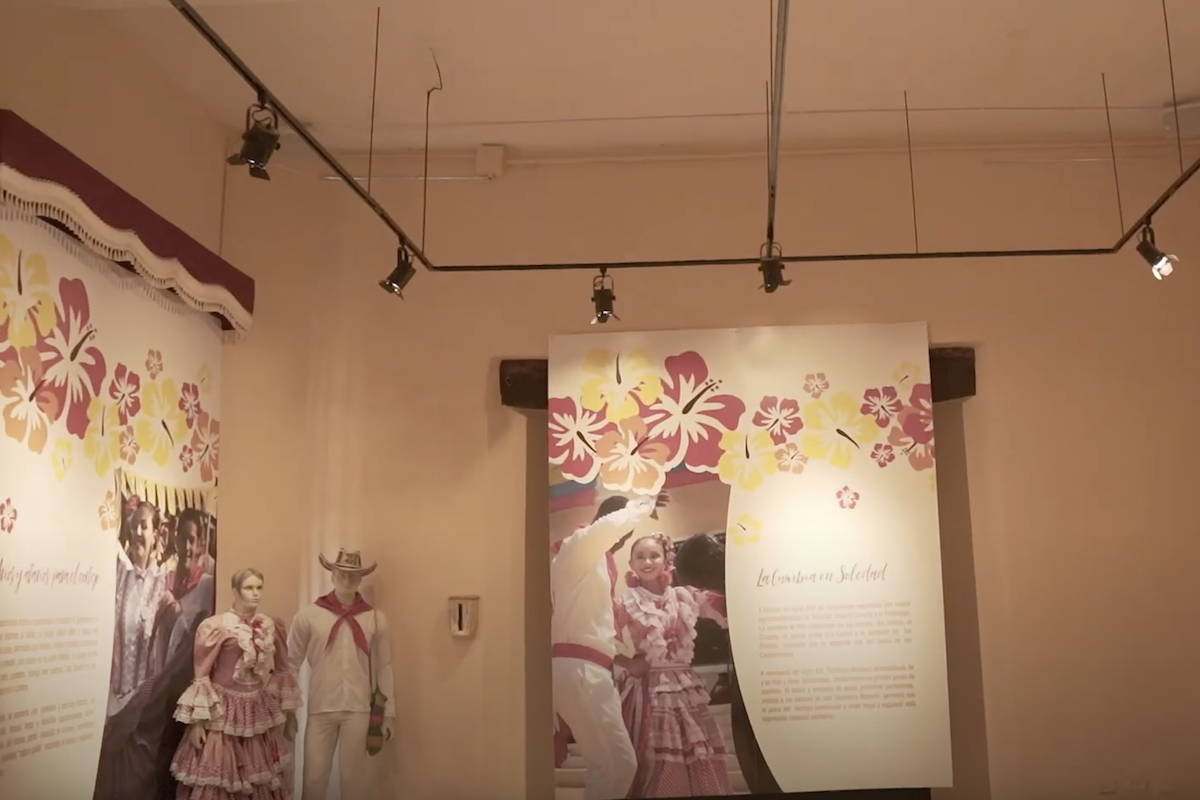
The Exhibition Gallery, composed of two wings, is not simply a static space; it is a constantly evolving stage that welcomes and celebrates the talent of guest artists. Designed to adapt to a variety of exhibitions, the room transforms with each new artist, offering visitors a fresh and renewed experience with each visit.
Specialized lighting from the Chauvet brand, along with ambient sound and theatrical drapery, ensures that each work, whether it’s a painting, sculpture, or multimedia installation, is presented in its fullest expression. This dynamic gallery not only serves as a platform for emerging and established artists, but also invites visitors to embark on an artistic journey, discovering new perspectives and engaging with diverse forms of expression.
Furthermore, by hosting different artists and styles, the gallery becomes a cultural meeting point, fostering the exchange of ideas and the appreciation of art in all its forms.
Main Auditorium

The museum’s auditorium, although simple in its design, has been meticulously adapted to meet the needs of oral presentations and speeches. With a capacity for 100 people, this space has been designed with clarity and comprehension in mind.
The lighting has been carefully calibrated and automated to ensure that speakers are adequately illuminated, without glare or shadows that might distract the audience. This lighting not only enhances visibility but also creates an environment conducive to concentration and focus.
Sound is essential for any oral presentation, and the auditorium spares no expense in this regard. It is equipped with high-quality microphones that ensure each word spoken by the presenter is heard clearly throughout the venue, regardless of where the listener is seated.
The ceiling has undergone special acoustic treatment, designed to minimize unwanted reverberations and echoes. This conditioning ensures that sound is uniformly and clearly propagated, allowing the audience to fully immerse themselves in the content of the presentation.
Phase 2: Coordination and Execution
The second phase of the project, essentially technical yet deeply rooted in the museum’s vision, focuses on the meticulous task of identifying and selecting the most appropriate hardware and software for the museum’s specific needs. This choice is not trivial; it’s about finding technological solutions that are not only functional but also harmoniously integrate into the museum’s historical and aesthetic context.
Once the technological components are selected, the process moves on to floor planning and the creation of connection diagrams. These documents, essential for any tech project, become the map that guides the integration of all elements, ensuring that each piece fits perfectly into the overall puzzle.
The coordination and execution of the works is a challenge in itself. Heritage buildings, with their rich history and unique architectural structure, present particular challenges. Every wall, every corner, has a story to tell, and any intervention must be made with the utmost care and respect for the past. This complexity is magnified when introducing modern technology into an ancient setting, requiring meticulous planning and coordination.
Furthermore, content development is crucial. It’s not just about presenting information, but doing it in a way that is both educational and engaging, connecting visitors with the history and legacy of the place.
Finally, it is essential to consider the uniqueness and delicacy of working in heritage spaces when budgeting. Surprises can arise at any moment, and it’s vital to be prepared both logistically and financially. Though challenging, this phase is essential to ensuring that the museum’s vision is effectively and respectfully materialized.
Detail engineering is not simply a technical process; it’s the essence that ensures the project’s vision is translated into a functional and coherent reality. Following the rigorous standards set by AVIXA, a recognized authority in the industry, we ensure that each component and system is designed and configured to deliver optimal performance. The meticulously crafted diagrams not only serve as guides for our technical team but also provide our clients with a clear understanding of how the equipment is interconnected and situated within the space.
Given that the museum is open to the public, it’s essential that the equipment is both stable and robust. A museum is a high-traffic space, with visitors of all ages interacting with the exhibits. Therefore, durability and resilience are crucial. We do not skimp on the selection of brands and equipment; each choice was made with an eye on quality and longevity, ensuring that the technological solutions are not only effective but also long-lasting.
Content Production: Bringing History to Life
Technology is just a tool; the heart of any exhibit is the content it presents. Recognizing the importance of an immersive and authentic narrative, we dive into content production with an unwavering commitment to quality.
Transforming our offices into a temporary studio, we dedicated two full days to the creation of images and videos. And we didn’t resort to generic digital solutions: each scene was meticulously produced with real actors and sets designed to reflect the era and ambiance of the museum.
This dedication to realism and authenticity ensures that each visitor feels truly transported back in time, connecting with history on a deep and personal level.
Fase 3. Optimización y Soporte de la Solución
La culminación de cualquier proyecto tecnológico es la fase de optimización, donde se afinan todos los detalles para garantizar una experiencia sin fisuras. En el contexto del museo, esto significa que cada estación y espacio ha sido meticulosamente calibrado para ofrecer la mejor experiencia posible al visitante. Las escenas de automatización, que controlan todo, desde la iluminación hasta los dispositivos interactivos, se han ajustado para reflejar los horarios específicos del museo, asegurando que todo funcione como un reloj bien sincronizado.
Además de la optimización, la programación de encendido y apagado se ha establecido para maximizar la eficiencia energética y la longevidad del equipo. Estos ajustes no solo garantizan que el museo funcione sin problemas durante las horas de operación, sino que también protegen y conservan los equipos, reduciendo el desgaste y prolongando su vida útil.
Por último, se organizó el acompañamiento y soporte post-venta, el cual en sitios abiertos al público, es un aspecto fundamental para garantizar una operación fluida.
La Experiencia Museográfica en la Era Digital

El Gobernador del Atlántico, Eduardo Verano, el alcalde Soledad José Herrera y Alejandro Ramírez, de Schallertech, el día de la inauguración de la Casa Museo.
Para Schallertech, sumergirse en el mundo museográfico no es solo un trabajo, es una pasión. Es un sector que nos brinda una profunda gratificación, permitiéndonos fusionar historia, cultura y tecnología en experiencias inolvidables.
La UNESCO señala que en Latinoamérica existen más de 8.000 museos. A pesar de que muchos de ellos son modestos en tamaño y enfrentan desafíos presupuestarios, todos comparten una misión común: preservar y compartir la rica tapeza cultural de la región. Sin embargo, en un mundo en constante evolución, estos museos enfrentan la titánica tarea de mantenerse relevantes y atractivos.
Aquí es donde la tecnología digital se convierte en un aliado poderoso. Permite a los museos renovar y diversificar sus contenidos con una eficiencia sin precedentes, ofreciendo experiencias más inmersivas que capturan la imaginación de públicos de todas las edades. Desde interacciones lúdicas y educativas para niños hasta exposiciones detalladas para aquellos ávidos de conocimiento profundo, la digitalización ha revolucionado la forma en que los visitantes se conectan con la historia y la cultura.
En Schallertech, valoramos la singularidad de cada museo. Reconocemos que cada uno tiene su propia historia, su propia voz y su propia esencia que no puede ser simplemente replicada. Esta diversidad es lo que alimenta nuestra creatividad, impulsándonos a diseñar soluciones a medida que realzan la individualidad de cada institución. Al hacerlo, no solo estamos innovando en el campo tecnológico, sino también contribuyendo al tejido cultural de la sociedad, un honor que llevamos con profundo orgullo y responsabilidad.
Personas, organizaciones y aliados que hicieron este proyecto posible
Cliente
- Secretaría de Cultura y Patrimonio del Atlántico
Museografía, Diseño y Producción
- Lázaro Cotes Cotes. Antropólogo y museógrafo.
- Johnny Meca Ospina. Antropólogo y museógrafo.
- Ceibalab. Producción de contenidos y fotografías.
- Schaller Design & Technology SAS – Schallertech.
- Alejandro Ramírez. Líder del proyecto. Consultor de producción y proyectos culturales.
- Freddy Sampayo. Director de tecnología e información. Consultor de proyectos culturales.
- Diana Mendoza. Gerente de proyectos.
- Andrés De Sales. Ingeniero de proyectos.
Aliados que hicieron parte de este proyecto.
- Crestron. En automatización del auditorio, el control de la iluminación y la programación del encendido/apagado de los equipos, la cual se realiza vía IP y Cresnet.
- Legamaster. Monitores táctiles anti-vandálicos.
- BrightSign. Reproductores de señalización digital.
- LG. Para los monitores de los cuadros dinámicos. Estos fueron complementados con una película mate antirreflejo y se enmarcaron para dar el aspecto de un cuadro antiguo.
- Peerless-AV. Kiosco interactivo.
- Chauvet. Para la iluminación de la galería y el auditorio.
- Epson. Proyectores para el auditorio y la sala interactiva.
- Rosebrand. Cortinería temoacústica ignífuga en todo el museo.
- Targetti. Iluminación de fachada.





